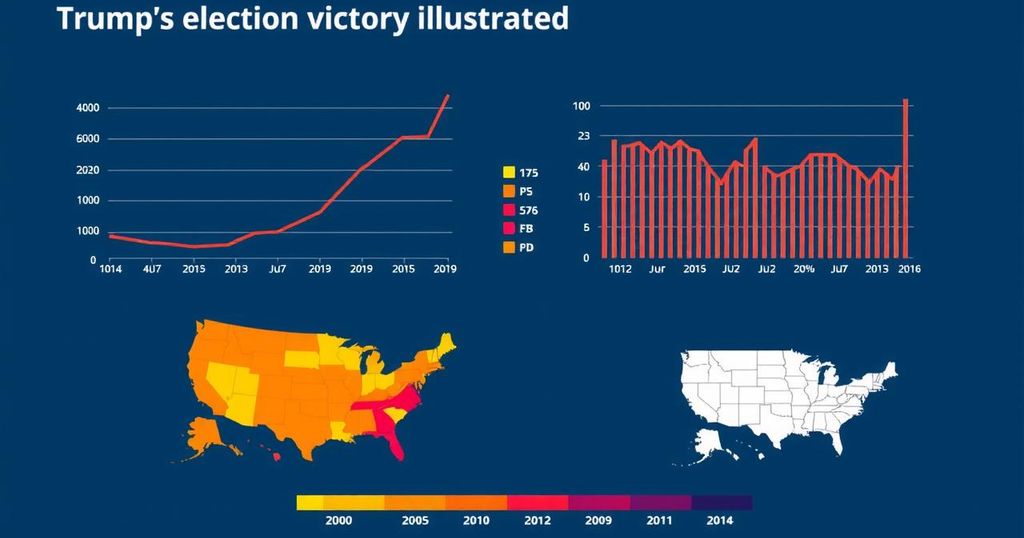Donald Trump secured victory in the recent election due to unfavorable conditions for Vice President Kamala Harris, primarily stemming from President Biden’s low approval ratings (39%) and weakening consumer sentiment (70.1). Key demographic shifts saw substantial Latino support, particularly amongst younger voters, and geographical gains for Trump, especially in rural and suburban areas. Despite the victory, the narrow margins highlight a volatile electoral landscape, suggesting potential for future political shifts as voters remain unpredictable.
In analyzing Donald Trump’s electoral victory, numerous factors contributed to the outcome, particularly within the context of Vice President Kamala Harris’s candidacy as an extension of an unpopular administration. With President Joe Biden’s approval rating languishing at 39%, history suggests that incumbents with ratings below 50% have consistently struggled. Furthermore, consumer confidence, tracked by the University of Michigan’s monthly survey, recorded a low of 70.1 under Biden, failing to meet the critical threshold historically correlated with re-election success. As inflation continued to plague voters, frustration with economic conditions diminished support across global leadership, further complicating Harris’s campaign. Despite some improvements in specific demographics, Harris’s overall performance remained limited compared to Trump’s broader appeal. Notably, exit polls indicated a significant shift among Latino voters, where support for Trump reversed dramatically from a 23-point deficit in 2020 to a 12-point advantage in 2024. Additionally, Trump’s engagement with younger voters yielded the strongest results for a Republican nominee in two decades, emphasizing a notable trend in his favor. Trump’s geographical gains also illustrated his expanding support base; his dominance in rural areas notably increased, and he reversed Biden’s gains in suburban regions, winning those areas by 4 points in contrast to Biden’s previous 2-point advantage. Meanwhile, crucial voting segments, such as those endorsing abortion rights, displayed unpredictability in their preferences, further complicating Harris’s support. However, it is vital to approach the celebration of Trump’s victory with caution. The margins observed in the popular vote and battleground states indicated a closely contested election rather than a sweeping mandate. The historical volatility of voter preferences highlights a precarious situation for the Republican Party, underscoring the importance of delivering on key policy promises. Should Trump overreach or fail to meet voter expectations in governance, opportunities for Democratic resurgence may materialize in subsequent electoral cycles, particularly during midterms and the next presidential election.
The analysis of Donald Trump’s electoral victory sheds light on the intricate dynamics of voter behavior and political climate within the United States. Factors such as presidential approval ratings, historical data on consumer sentiment, and demographic shifts in voting patterns played pivotal roles in shaping the election’s outcome. As political analysts have noted, the performance of candidates often reflects deep-rooted public sentiments and shifts in allegiance across various voter segments. Understanding these elements provides context for evaluating Trump’s success and the challenges that lie ahead for the Republican Party.
In conclusion, Donald Trump’s electoral victory can be attributed to a combination of factors, including the challenges faced by Vice President Kamala Harris stemming from an unpopular administration and significant shifts in voter demographics favoring Trump. Historically low approval ratings for Biden and subpar consumer sentiment underscored the electoral landscape, while Trump’s ability to resonate with critical segments marked a notable achievement. However, the narrow popular vote margins serve as a reminder of the unpredictable nature of voter behavior, urging caution in assessing the permanence of this political shift.
Original Source: www.usnews.com






